Motorcycle Investor mag
Subscribe to our free email news
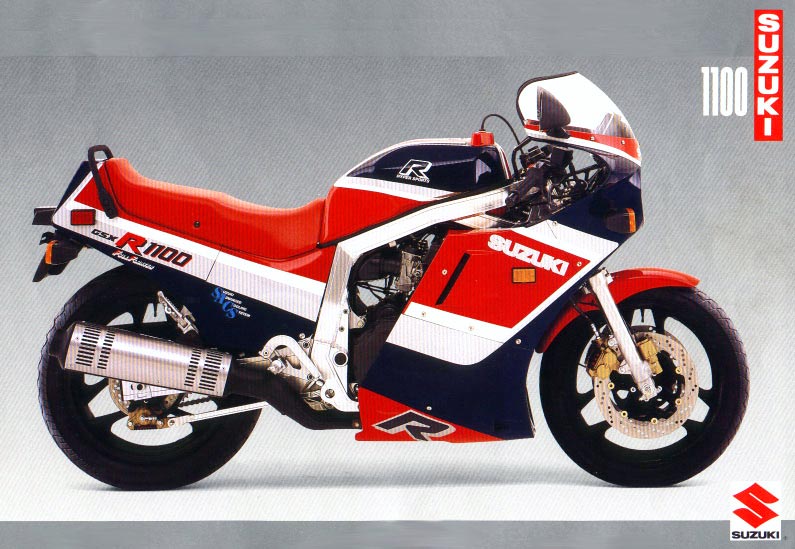
Buying used - Suzuki GSX-R1100
(May 2020. See the model gallery near the end.)
by Guy 'Guido' Allen
See our GSX-R750 series feature here
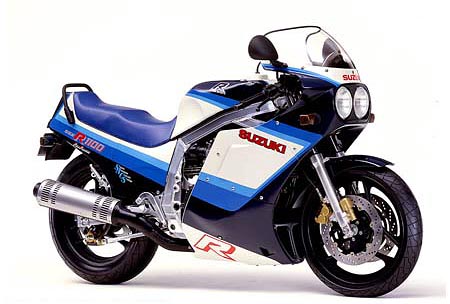
In a class of one
Suzuki’s mighty GSX-R1100 has plenty of fans – let’s take a look at how they stack up in the used market
Sure it may have been mown down in the stampede of newer and shinier models over the years, but in 1986 the GSX-R1100 was (as Motorcyclist magazine over in the USA then described it), “The quickest, baddest production big-bore sportbike you can buy.” It scorched down the standing quarter in 10.65sec with a 130mph (209km/h) terminal speed and had tripped the top speed radar at 258km/h. And it weighed an incredibly light (for its day) 197kg dry.
The other makers soon played catch-up, with the Yamaha
FZR1000 being the next serious competitor but, for a
little while there, Suzuki had what was effectively a new
category – litre-plus supersports multis – to itself.
Project engineers of the day admit they often wandered
into uncharted waters in the making of this bike and its
equally revolutionary 750 sibling (released the year
before), which meant taking a few development and
marketing risks.
Did it pay off? Well the name GSX-R effectively became a
brand in its own right, though there’s no doubt there were
some ups and downs along the way where the company,
according to some, may have lost its way.
So which are the models to buy and how do they stand up to
scrutiny? Let’s first get a bit of a handle on what came
out and when.
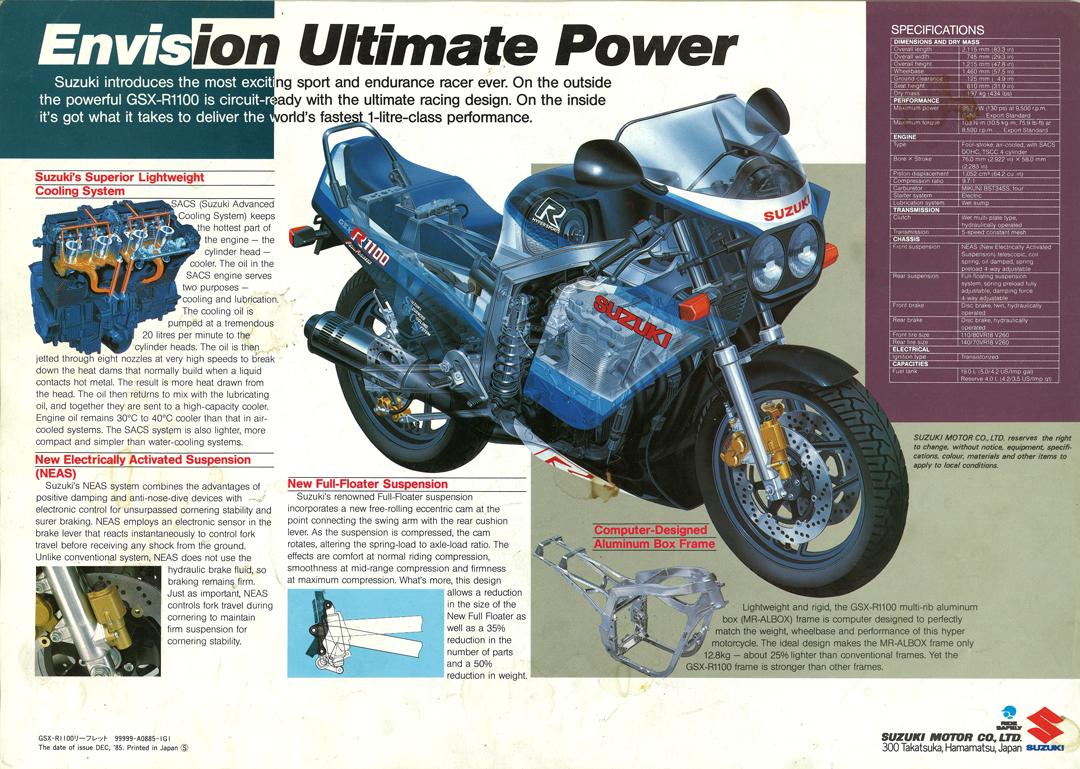
History
There were essentially four major generations of the
mighty GSX-R1100: three air/oil-cooled and one
liquid-cooled.
Gen one was the G, H and J models, all of them notable for
their slab-sided styling and running the original 1052cc
powerplant, quoting 130 horses. Essentially a development
of the 750, it ran a reinforced frame, longer swingarm,
more relaxed steering geometry up front and a
non-adjustable steering damper.
Little was wrong with the first iteration of the machine –
which says something for the quality of the development
process – and so the changes for year two (H) were nil
other than colour.
Year three (J) scored Enkei three-spoke rims that lifted
the looks of the machine and gave it a slightly wider
contact patch on the rear. The front guard was widened a
little, while the only engine mod was increased capacity
for the massive front oil cooler. The sidestand also came
in for attention, to make the bike a little less prone to
tipping over. Just on 2kg was added to the dry weight in
the J version.
Generation two was the K and L series of 1989-90. This one
scored a lower and heavier chassis, with some similarities
to the 750 Slingshot of 1988. We got to see the big
version of the engine, 1127cc, which in turn saw power
jump to 143 horses (138 in Oz, thanks to different noise
regs). Torque increased by close to ten per cent at
11.6kg-m. Weight was up to 210kg and we were now on
17-inch rims.
The K copped a roasting from some commentators that saw
next year’s model, the L, score significant changes
instead of the usual second-year paint swap. These
included upgraded suspension (USD at front), longer
swingarm and a switch to Michelin rubber, which was made
wider at the back.
Gen three was the 1991-92 M and N series and this was a
final period of refinement with the air/oil engine, rather
than radical change. The powerplant had numerous
alterations, including a switch from forked rockers to
single arms and shim adjustment. Carburettor size
increased massively from 36mm to 40, though the power
increase from 143 to 145hp was only slight. Meanwhile,
weight had climbed to 226kg.
Suspension was given a major make-over, boasting more
comprehensive adjustment front and back, along with a
greater choice of rates. Even the gearbox wasn’t left out,
scoring cooling oil jets on the top three cogs. Visually,
it’s marked as the first time the headlights were enclosed
behind a screen, for cleaner aerodynamics.
Generation four (WP through to WU) was last hurrah and,
once again, it followed the development of little brother
750 – this time by adopting what was now regarded as a
more conventional liquid-cooled engine.
The cooling allowed Suzuki to be more ambitious with the
power output (155 horses) and many tuners felt there was a
lot more potential locked away in those cases. Sadly
weight was also up. At 231kg claimed dry, it was a figure
which threatened to nudge it closer to sports tourer
rather than pure sports bike territory. Production ceased
in 1998.
On the road
In their day, the original slab-sided Gixxer elevens were
a very impressive device, particularly if you happened to
have a nice big and open set of sweepers to play on. I
remember having some near-religious experiences on the
things when they were new, one of which I’m sure involved
former AMCN Ed Ken Wootton (RIP), an FZR1000 and some acts
he described as an unsanctioned race meeting.
Anyway, even by modern standards the G through to J models
felt steady, fast, and strong. The suspension was nowhere
near as good as the top modern kit but nevertheless coped
well. Today, it would feel a little old fashioned, and
down on grip, but a well set-up one should still be a
damned good ride. That’s assuming you can cope with the
sports-style ride position, which is at its most harsh on
this generation.
I’m less enamoured with the middle air/oil-cooled series
of K through to L, despite the numerous suspension
upgrades along the way. Oh, and the significant jump in
engine performance. Don’t get me wrong, in anything other
than extreme circumstances, they were actually very
capable machines. But somehow they lacked the brutish
character of their predecessors and didn’t ‘gel’ as well
into a complete working unit. Straight line performance
was near identical to the earlier versions.
For me, the M and N models brought the whole plot together
again, albeit in a package that felt very different to the
one the company started out with. Though still appallingly
fast, they felt heavier and a little less happy in a true
sports environment.
As the heaviest of all the Gixxers, the liquid-cooled W
series had gained a whopping 39 kilos over its first
ancestors. Okay, it also picked up an extra 26 horses
along with a smoother and more sophisticated engine. But
any pretence of it being a track weapon was long gone.
Which is okay, as it still made a very quick and capable
road bike – one I have a lot of time for.
It’s still very fast by today’s standards and can be made
to handle respectably with a basic freshen-up. Just don’t
expect it to be competitive on the track with a modern day
supersports. It is however a super-capable sports-tourer.
In the workshop
A few calls around the place and a scan of the web
revealed remarkably few mechanical dramas with these
things. Across the range, the engineering seems to be
robust.
Few saw the race track locally, as they were ineligible
for anything other than unlimited classes – which meant
club rather than national championship events. So the good
news is most will have spent little time being ridden at
their limit.
Regular changes with good quality oil is essential for
long engine life, particularly given the sophistication of
their cooling systems. High milers will be looking for a
fresh camchain at around 100,000, at which point you might
be tempted do the rings and valve guides. I’d be backing
the liquid-cooled powerplants to last the longest, if the
maintenance is kept up.
The later generation machines on 17-inch rims are much
easier to find a good selection of rubber for – 18-inch
choices are limited.
Check carefully for the condition of the bodywork on the
older machinery, as replacements are becoming scarce.
Poorly done or cheap modifications are also something to
be avoided. If it’s got an aftermarket exhaust, for
example, check it’s running right and that the owner has
made an effort to get it tuned properly for the pipe.
It’s a fair bet that the suspension will be worn on almost
anything you look at, so keep in mind the possibility of a
rebuild, which is worth doing on anything with this sort
of performance.
Which model?
At the moment, that may depend on whether you’re a
collector or a bargain-hunter. If you’re the former, the
first three models (G, H and J) are the pick. Some folk
like the J as the ultimate slab-side model, while others
will stick with the very first G. In any case I’d be
looking for the best machine available, to minimise
ongoing restoration costs. Here, the condition of the
cosmetics could be just as important as the mechanicals.
Prices are all over the place for early models, but about mid teens would seem right for a decent one. A concours G could nudge $20k.
If you’re looking for a good-value ride, my choice is any
of the late W series. You can pick up a decent one for
around $6000-8000. That’s bargain motorcycling,
particularly considering the stupendous power output, and
you can fit some good current rubber to it. Increasingly,
collectors will start to eye any generation as desirable.
Regardless of model, pay the right price for a good
example, and you’ll have more than enough performance to
keep you interested for a very long time.
See the contemporary FZR1000-GSX-R1100 comparo from Classic Two Wheels
***
Know your Gixxer
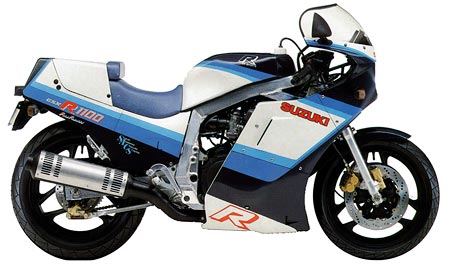
1986 – G model
The original “slabbie” with 130 horses and 197kg claimed
dry weight. This was an early adopter of radial tyres, on
18-inch rims – 110/80-18 up front and 150/70-18 on the
rear.
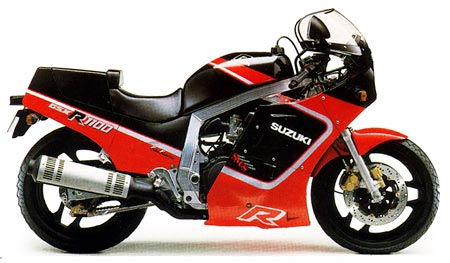
1987 – H model
Unchanged except for graphics.
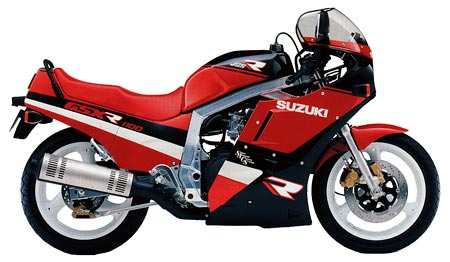
1988 – J model
Most obvious change was to three-spoke Enkei rims with a
larger 160-section rear. Oil cooler size was boosted and
dry weight was up to 199kg. Considered highly collectible
as the best-sorted of the slabbies.
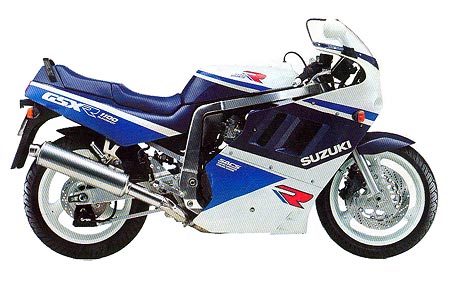
1989 – K model
Complete redesign with more rounded styling. Engine
capacity up from 1052 to 1127cc while carbs went up from
34 to 35mm Mikuni. Power was now 138hp for 210kg weight.
Now on 17-inch wheels with 43mm forks (up from 41mm).
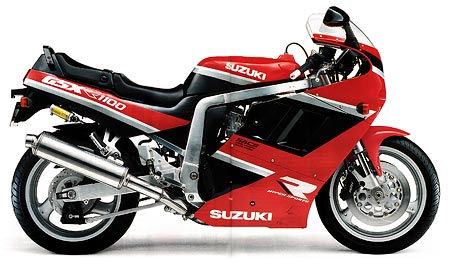
1990 – L model
Significant chassis changes to counter complaints about
the handling of the K. Included were USD forks and a
longer wheelbase.
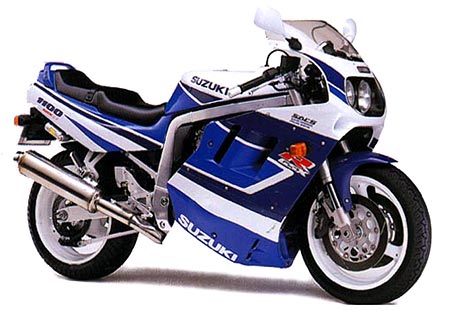
1991 – M model
Significant engine and chassis changes. Power claim was
the same, but weight was up to 226kg. More sophisticated
suspension mated to bigger rims. Styling put the
headlights behind a perspex screen for the first time.
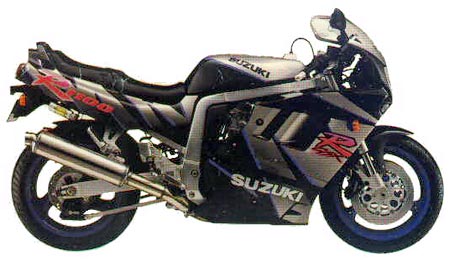
1992 – N model
Unchanged except for graphics.
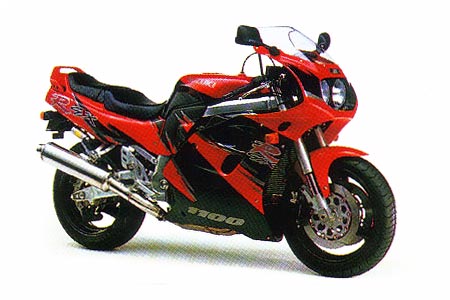
1993 – WP model
The last big redesign, this time with a liquid-cooled
rather than oil/air-cooled engine, in line with a major
change to the 750. Around 155 horses and 231kg.

1994-1998 – WR, WS, WT & WU models
Unchanged except for graphics. Production ceased in 1998,
though they sold locally to 1999. Replaced by the
GSX-R1000 for the 2001 model year.
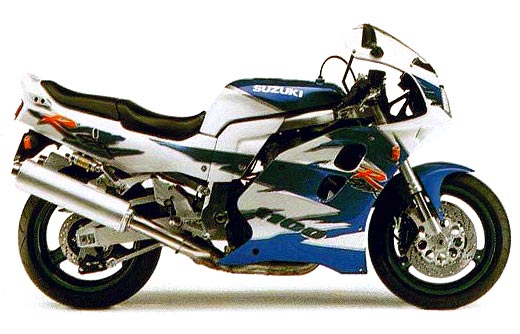
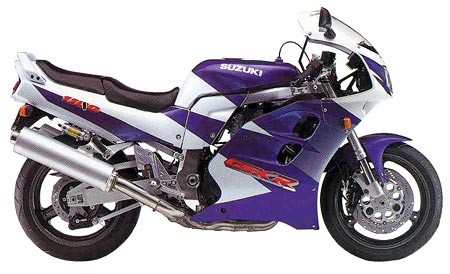
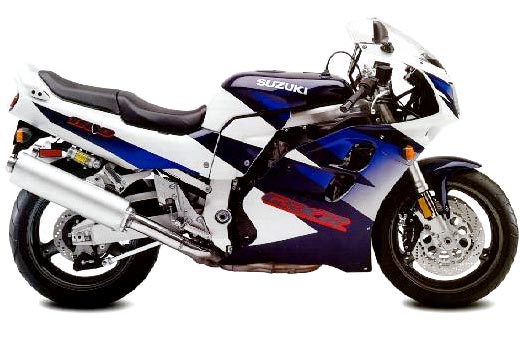
***
Resources
See our GSX-R750 series feature here
Books
Suzuki GSX-R – a legacy of performance, by Marc
Cook
Published by David Bull Publishing in 2005. A Suzuki
America-sponsored backgrounder on the development of the
GSX-R series that’s particularly enlightening about the
early development years.
Suzuki GSX-R by Mike Seate
Published by Motor Books. History and development
overview.
Suzuki GSX-R Performance Projects by local
author Ian
Falloon
Published by Motor Books. Covers basic servicing along
with a few upgrades that might be tackled at home.
Web
Suzukicycles.org
Excellent index of Suzuki models over the years.
Spex
Suzuki GSX-R1100G (first model)
ENGINE
Type: air/oil-cooled inline four with four valves per
cylinder
Bore and Stroke: 76x58mm
Displacement: 1052cc
Compression ratio: 10.0:1
Fuel system: Mikuni BST34SS x 4
TRANSMISSION
Type: 5-speed constant mesh
Final drive: Chain
CHASSIS & RUNNING GEAR
Frame type: Twin-loop alloy
Front suspension: 41mm conventional fork, electronically
activated damper
Rear suspension: Monoshock, preload and rebound damping
adjustment
Front brakes: 4-piston 310mm floating twin discs
Rear brake: Single disc
DIMENSIONS & CAPACITIES
Dry weight: 197kg
Seat height: 810mm
Fuel capacity: 19lt
PERFORMANCE
Max power: 130hp @9500rpm
Max torque: 10.3kg-m @8000rpm
-------------------------------------------------
Produced by AllMoto abn 61 400 694 722
Privacy: we do not collect cookies or any other data.
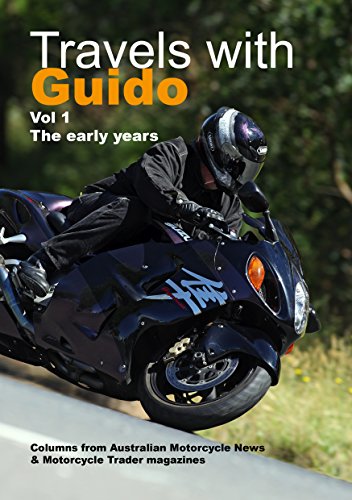
Archives
Contact



